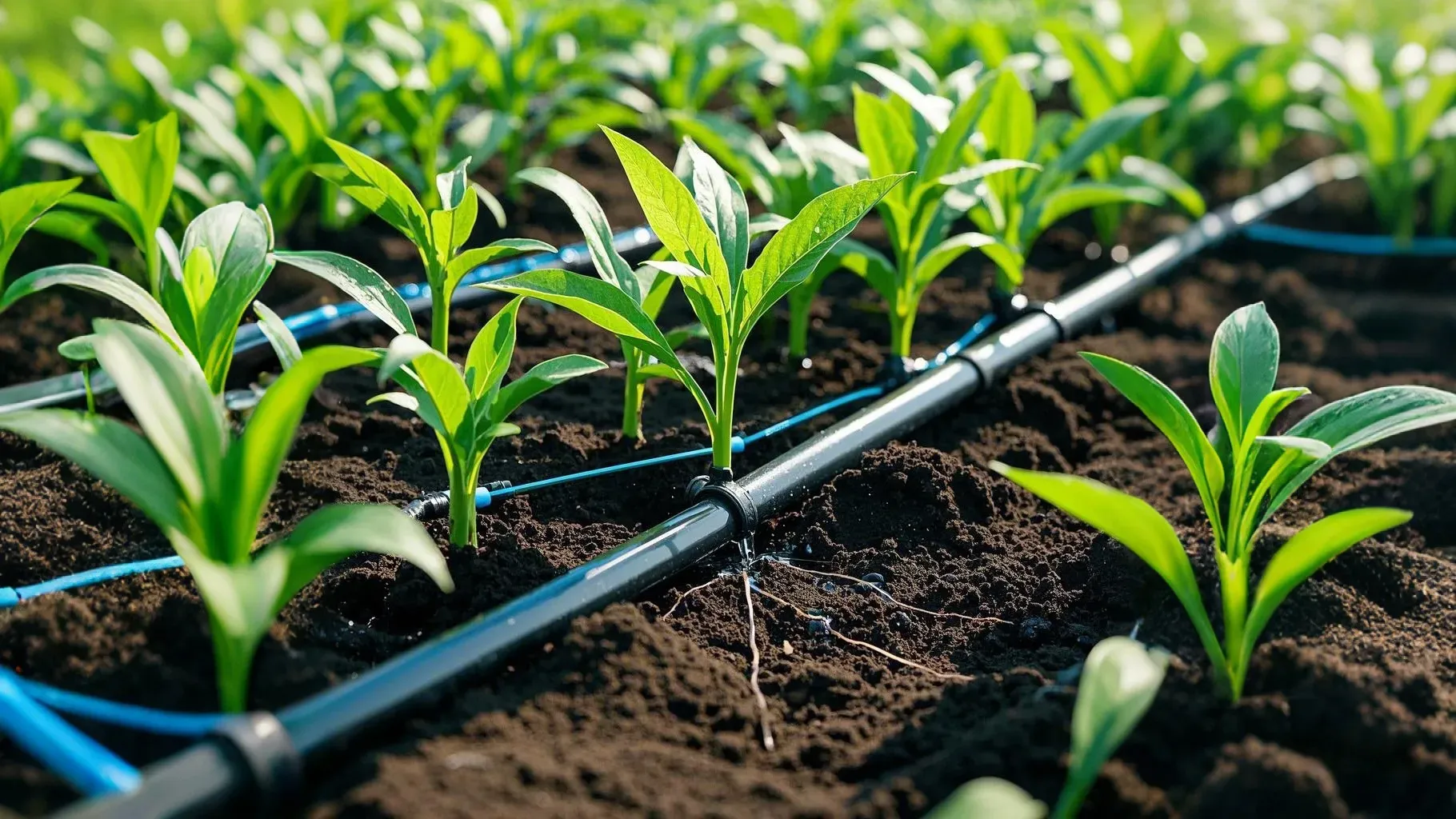Drip Irrigation Tape: A Key Solution for Water-Efficient Farming Practices
In a recent article published by the United States Department of Agriculture (USDA), it was highlighted that water usage efficiency is becoming increasingly critical in agriculture, especially as global water resources become scarcer. Among the various water-saving technologies available, drip irrigation, particularly the use of drip irrigation tape, has gained considerable attention due to its effectiveness in optimizing water delivery to crops.

Figure 1: Precision water delivery through drip tape emitters
Key Challenges in Drip Irrigation and Practical Solutions
1. Uneven Water Flow and Pressure Fluctuations
One of the most common issues in drip irrigation systems is uneven water flow. Variations in water pressure across the system can cause some areas of the field to receive too much water, while others receive too little, which leads to uneven crop growth.
To mitigate this, it is crucial to use pressure regulators. These devices help maintain consistent water pressure throughout the irrigation system, ensuring that water is evenly distributed. Additionally, using quality drip tape with precise emitter spacing can further enhance uniformity.
2. Drip Emitter Clogging
Clogging of emitters is a common problem, particularly in areas with hard water or high levels of mineral content. Clogged emitters can disrupt the water supply to certain sections of the field, reducing irrigation efficiency and crop yields.
Regular system maintenance, including flushing the irrigation lines and installing water filtration systems, can prevent clogging. Using high-quality, durable drip tape with self-cleaning emitters is another way to minimize this issue.
3. Tape Durability and Environmental Exposure
Drip irrigation tape is often exposed to harsh environmental conditions such as sunlight, high temperatures, and mechanical wear. Over time, these factors can cause the tape to degrade, leading to leaks or reduced performance.
Opting for high-density polyethylene (HDPE) drip tape offers superior UV resistance and durability. Additionally, proper installation practices, such as avoiding direct contact with soil or excessive sunlight, can extend the lifespan of the tape.
The Role of Drip Irrigation Tape in Sustainable Agriculture
Drip irrigation tape is an essential tool for farmers looking to conserve water while maintaining high crop yields. By delivering water directly to the root zone of plants, it minimizes evaporation and runoff, ensuring that crops receive the necessary hydration. Drip irrigation tape is particularly beneficial in regions facing water shortages or experiencing irregular rainfall patterns.
Advantages of Using Drip Irrigation Tape:
- Water Efficiency: Direct root-zone delivery reduces evaporation loss
- Cost-Effectiveness: Average 30-50% water usage reduction
- Improved Crop Health: Consistent moisture levels prevent plant stress
Conclusion
Drip irrigation tape is an indispensable solution for modern farmers looking to address water scarcity and improve irrigation efficiency. By understanding and overcoming challenges such as uneven water flow, emitter clogging, and tape durability, farmers can optimize their irrigation systems for better productivity and sustainability.
References
1. United States Department of Agriculture (USDA), "Water Management in Agriculture: Efficient Techniques for 2024"
2. Irrigation and Drainage Journal, "Sustainable Irrigation Practices: A Guide for Modern Agriculture"